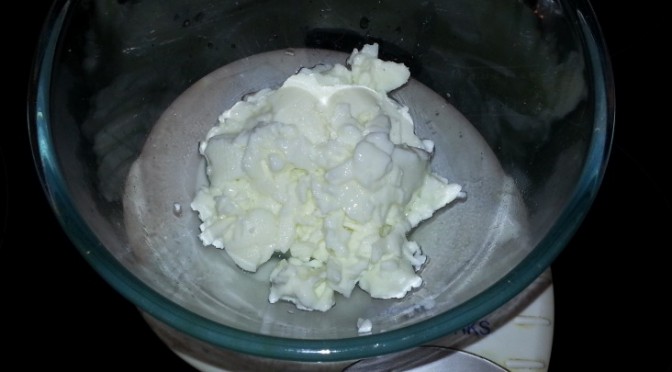Page contents
Why Quark Cottage Cheese is needed for the Budwig Diet
Quark is a bland cultured soft, cottage cheese of about 12-14% protein. It is common in Germany and Eastern Europe where until recently it was traditionally made at home.
When Dr Johanna Budwig created the Budwig Protocol, she used quark. Cottage cheese is essential for the Budwig Diet because of its sulphur-rich milk proteins. These combine with the linseed (flax seed) oil to make it water soluble which enables the omega-3 fatty acid to work its magic where it is needed.
The cheese you use should be of 12-14% protein, fat-free or very low fat; a low-fat or virtually fat-free quark is ideal. Quark’s soft texture and mild flavour works well in the recipes on Budwig Diet.
Whether it is actually quark or a similar, preferably low fat/fat-free, soft curd type cheese isn’t essential.
Buying Quark in the UK

Quark in the UK is made from pasteurised heat-treated milk. It is available in UK supermarkets but it is often hard to find. The people who work there often haven’t noticed it and will probably find it as hard to locate on the shelf as you. If you persist you should find some in the larger stores. Waitrose, Sainsbury’s, Tesco and Morrison’s all stock it. For the Budwig Diet you need a low fat or fat-free quark. The quark that comes from Waitrose is less sharp, less yoghurty and goes particulaly well in the Budwig recipes but the others can make a nice change too. If you want organic quark, or unpasteurised, raw milk cheese you will probably have to use an alternative or make your own, which it is fairly simple to do.
Fat Content of Quark for the Budwig Diet
The terms non-fat and low fat are quite confusing. Johanna Budwig said that, apart from linseed oil (and the occasional addition of cold-pressed pumpkin seed oil to salads), you should avoid all other fats, especially animal fats. Her books didn’t make a big issue on the matter of the fat content of the cottage cheese but most people feel that as fat free as possible if the best way to go. Don’t go by what the tubs say about “low fat” which can be misleading; the important thing is to look at the actual fat content shown in the nutritional info. It is virtually impossible to remove every last trace but “low fat” quark can be effectively lower in fat compared to milk proteins than skimmed milk as the cottage cheese is more concentrated and there is less water.
Alternatives to Quark.
If you can’t find quark use a good, low-fat/fat-free cottage cheese or you can make do with Greek-style yoghurt – check the protein content, it should be at least 10% and you should not add any extra milk when you mix the linseed oil with it. If you use yoghurt, it must be low fat/fat-free and free of any sugar or flavouring and you may even need to strain it, which means you will need to start with more than 100g. Soya yoghurt is not an option fr the Budwig Diet.
Dairy Free Options. There really are no vegan or non-dairy options but some people have apparently done the diet with tofu but it isn’t as rich in the important sulphur-containing proteins. Oleolux contains onions and garlic which bond with the linseed oil to improve its absorption by the body.
Recipes for Making your own Quark-style Cottage Cheese
If you want to ensure the quality of your the milk that goes into your quark your best option for cottage cheese/quark is to make your own. See how in making your own quark or cottage cheese recipes.
Raw Milk
Some people prefer to use raw milk to make a quark-style cheese, it is available at some farmers’ markets and some farms supply online. Raw cows’ milk can only be bought direct; this food finder site helps you track it down. Be aware of all the health arguments for and against live milk before you make the decision to use it.

